Let’s be honest. Our consumption-oriented society is often perceived as incompatible with the words “ethical” and “sustainable”.
- We consume too much.
- We purchase things that we don’t need.
- We purchase things that are harmful to humans, animals and the environment.
And worse, we are often not even aware of it.
When we see giant fast food brands sell unhealthy products to a mass market since years, or large cosmetic brands advertise products with toxic ingredients, we might start wondering if branding and marketing are such great tools after all.
And this raises a fundamental question:
Are brands bad for society?
The answer is: Well, it depends.
There are all sorts of brands for all types of sectors and actors:
- From the private sector to the public sector.
- From organizations to individuals.
- From corporations to NGOs.
And within each one of these categories you can find brands that are perceived as more ethical/better for society than others.
A brand itself is neither good nor bad. However, the values, strategies and actions of the company/organization/person behind it can influence the perception of the brand as being good or bad, ethical or unethical.
In this article we would like to provide some guidance around building ethical brands within the corporate sector.
And by ethical brands we mean brands that are created by companies which truly care about the society they belong to, its laws and its living beings. Here we’re not talking about companies that only do so for gaining new clients or some sort of competitive advantage.
Proven Systems for Business Owners, Marketers, and Agencies
→ Our mini-course helps you audit and refine an existing brand in 15 days, just 15 minutes a day.
→ The Ultimate Brand Building System is your step-by-step blueprint to building and scaling powerful brands from scratch.
Table of Contents
Exploring the concept of an “ethical brand”
In order to understand the concept of an ethical brand, we first need to understand what the words “ethical” and “brand” mean.
Defining “ethical”:
The Oxford Dictionary defines “ethical” as follows:
- Relating to moral principles of the branch of knowledge dealing with these.
- Morally good or correct.
- Avoiding activities or organizations that do harm to people of the environment.
Defining “branding”:
On the other side, the American Marketing Association defines a brand as “a name, term, design, symbol, or any other feature that identifies one seller’s good or service as distinct from those of other sellers”.
In other words, and as explained in our What is branding article, a brand is the idea or image people have in mind when thinking about specific products, services and activities of a company, both in a practical and emotional way.
The concept of ethical branding:
Within the corporate sector, an ethical brand is therefore directly linked to the product and activities of the business behind the brand. For example, if a company selling GMO fruits and vegetables is famous for having agricultural practices that are toxic for the neighbouring communities, it is very likely that the brand will not be perceived as ethical by the public.
In his article “Ethical Branding And Corporate Reputation”, Ying Fan explained: “an ethical brand should not harm public good; instead it should contribute to or help promote public good”.
Additionally, authors Alwi, Ali and Nguyen, state that by being an ethical brand, the brand: (1) acts morally; (2) considers economic, social and environmental responsibilities; (3) has integrity, honesty, accountability and commitment to doing the right thing; and (4) creates added value for the firm, customers and its stakeholders.
What is an ethical brand?
After combining all the above definitions, we would like to define “ethical brand” as follows:
Ethical brand definition:
A brand that represents a company, organization or person whose products, services and activities are:
1) morally correct
2) do not harm people, animals and the environment
3) contribute to society and public good in a responsible, positive, and sustainable way
Ethical brands should have the word “ethics” in their DNA and their entire strategy built towards providing long-term sustainability to their business, the society and the planet.
The importance of ethical branding
At The Branding Journal, we believe branding is perhaps one of the most strategic components of a marketing strategy and that’s why we find it so interesting. But because it is such a powerful tool for growing a business or an organization – it also needs to be used in a very careful way.
In modern society, companies have indeed a powerful role to play. Some corporations have even become so big that their actions and strategic decisions have a direct influence on governmental policies and the lives of citizens. Due to their systematic importance it is vital that corporations exert their power in a way that contributes to public good and that they play their part in finding social and environmental solutions for the future of this planet.
In this line, there is a very interesting Ted Talk by Jason Clay on “How big brands can save biodiversity”. If you haven’t seen it yet, we highly recommend you to have a look at it.
Companies are citizens of the society with rights and responsibilities. An ethical branding strategy will help them get their values, mission and vision right from the beginning to contribute to society in a positive way.
As discussed, ethical brands are important because they help improve the society of today and tomorrow. Also, as a secondary benefit from a self-serving standpoint, acting and being perceived as an ethical brand can represent a vital competitive advantage in an overcrowded marketplace.
Why companies should help consumers in their ethical consumption decisions

From a consumer perspective, in the buyer decision process, there is a clear trend towards accounting for ecological and sustainable factors before, during, and after the purchase of a good or service.
This sustainability trend is either a deliberate and conscious ethical decision or simply imposed upon the consumer by governmental policies.
Yet, there seems to be a discord between the demands and duties of consumers and the responsibilities of companies that sell goods and services.
In some countries (such as France and Germany), consumers have to do grocery shopping without plastic bags, while companies are still allowed to sell processed foods with 4 to 5 unnecessary packaging layers.
In other countries, consumers deliberately seek to purchase fair-trade, local, organic products, when the big majority of products or services available in the market are not answering these needs.
Have a look at the “Zero Waste” consumer movement, which promotes a consumption lifestyle that produces little to no-waste. Do you realize how difficult it is for these consumers to reach their objective in a society dominated by big grocery stores with plenty of processed and single use packaged goods – or coffee shops and restaurants providing endless plastic plates, cups and cutlery?

We believe the responsibility for a more sustainable planet should not lie on the shoulders of consumers only. Brands and companies should be part of the equation by offering truly ethical products and services.
How to create an ethical brand (+ real life examples)?
Creating a 100% ethical brand is not easy, as there are a lot of factors to consider.
This article aims to provide some general guidance for creating a strong ethical brand. But before we continue, please note that:
- The ideas listed below provide a general overview. If you want to get more in-depth into ethical business practices, we highly recommend you to seek for other organizations’ advice (e.g: Fairtrade Foundation, Environmental Justice Foundation, Greenpeace, Amnesty International, etc).
- The ethical reality can be different for each type of industry. We therefore highly recommend to seek for the support of specialized organizations or citizen movements that will be able to provide more in-depths advice according to the industry. An example can be Fashion Revolution for the Fashion industry.
This guide is meant as a first step towards entering the ethical branding world. We really hope that the following ideas will help you incorporate new business practices for building a more ethical brand, whether you are creating a brand from scratch or trying to evolve your current brand!
1. Ethical brand purpose – why is your brand here?
In a past article, we explained the importance of having a clear brand purpose. When a company can answer the question “why are we here?”, there are high chances that they already have established a clear long-term branding strategy based on that purpose.
But some brand purposes are stronger than others. To find a strong ethical purpose for your brand, first have a look at the major sustainable development goals (SDGs) for the world.
In 2000, the United Nations created “UN Global Compact” – the world’s largest corporate sustainability initiative, in which they list global sustainable development goals for companies to focus on.
Today, there are 17 SDGs and we believe they can be a great source of inspiration for companies that want to find a strong and meaningful brand purpose:
- No poverty
- Zero hunger
- Good health and well-being
- Quality education
- Gender equality
- Clean water and sanitation
- Affordable and clean energy
- Decent work and economic growth
- Industry, innovation and infrastructure
- Reduced inequalities
- Sustainable cities and communities
- Responsible consumption and production
- Climate change
- Life below water
- Life on land
- Peace, justice and strong institutions
- Partnerships for the goals
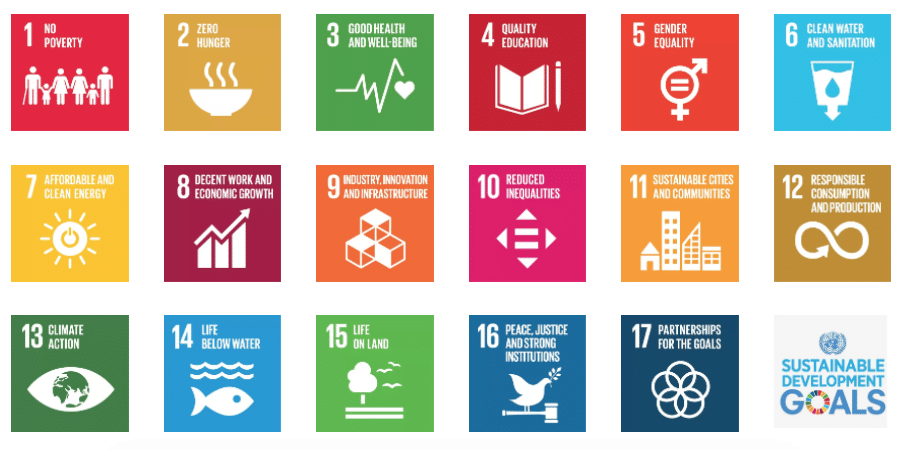
Of course, there are many other types of brand purposes. The examples above are just here to provide some guidance and it will be up to you to choose what ethical purpose(s) you want your brand to be focused on.
Example:
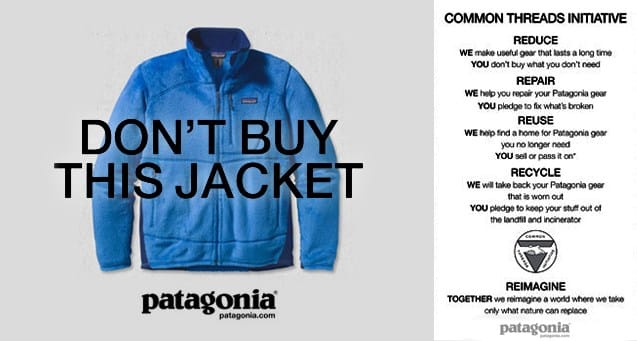
Patagonia is a US clothing brand that sells outdoor clothing and is considered to be an “activist company”. On their website, the company acknowledges that they are part of the ecological problem and have therefore been working hard towards limiting the damages the company’s activities can have on our planet.
The brand purpose of the Patagonia is: “we’re in business to save our home planet. We aim to use the resources we have—our voice, our business and our community—to do something about our climate crisis.”
The company further explains:
“Knowing we are part of the problem, we must also recognize that climate change—as a deadly condition of infinite human actions—is not an issue we can tackle outright. That’s why we try to stay focused on specific things Patagonia can do to reduce, neutralize, or even reverse the root causes of climate change. “
Some of the main actions undertaken by the company to meet this purpose are:
- Reducing the environmental impact of the company’s supply chain
- Support grassroots activists by paying an Earth Tax
- Using the company’s voice to advocate systemic change
- Promoting minimalism by empowering customers to think twice before they purchase a product and by offering high quality products meant to last and that can be repaired
- Support regenerative practices in ranching and agriculture
- Envisioning a new approach to business
We could therefore say that Patagonia is fighting towards meeting the United Nations’ SDGs #12 (Responsible consumption and production) and #13 (Climate change).
2. Ethical brand values and principles– what does your brand stand for?
Once you’ve found your brand purpose, it is important to define your brand values and principles. For companies wishing to advance towards their purpose, the job starts indeed by incorporating ethical values into the brand strategy and acting responsibly.
According to the United Nations, this means, “operating in ways that, at a minimum, meet fundamental responsibilities in the areas of human rights, labor, environment and anti-corruption”. This will not only allow corporations to establish a culture of integrity, and to preserve their basic responsibilities to people and planet, but also setting the stage for long-term success.
In addition to the principles mentioned by the UN, other ethical corporate values can be for example ‘transparency’, ‘honesty’ or ‘respect’. These should be the basis for the creation of an ethical brand.
In this article we are focusing on the ethical values of a brand, but of course, your brand should also be defined by a set of additional values that will shape the brand’s personality and differentiate it from the competition. Some examples are: tradition vs. modernity, fun vs. serious, bold vs. careful, innovative vs. conservative, etc.
Example:
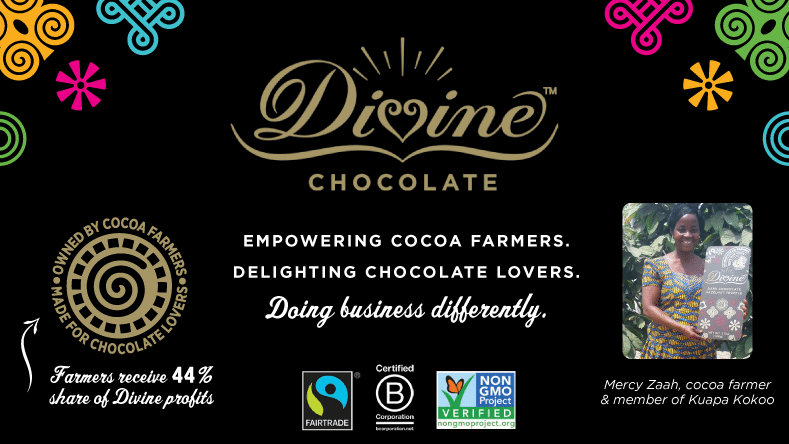
Divine Chocolate launched in the late 90’s the first fairtrade chocolate bars for mass consumption in the UK market. The farmer-owned company is well known for paving the way for other big players in the chocolate industry to become more sensitive to fairtrade practices.
Some of the main ethical values of the brand are:
- Community-focused (by empowering smallholder farming families and livelihoods of local communities)
- Gender equality (through women’s empowerment programs)
- 100% fairtrade (by using fairtrade practices for everything the company does)
3. Product and services
The third important aspect to consider when creating an ethical brand is offering ethical products and/or services.
Your brand can indeed have the best purpose and values in the world, however if you are selling products that are harmful, dangerous, illegal or toxic, there is no chance the brand will be considered as ethical.
In these cases, the ethical controversy has more to do with the effects of the products than the branding strategy. However, unethical products will have a direct impact on the brand. Therefore it is important to choose to sell products or services that at least do not cause any harm to people, animals, and the environment. And if they can contribute positively to society, that’s even better.
If your company is currently selling products that are harmful to people, animals or the planet, you should consider changing what you are offering to society.
In some cases, you won’t have to necessarily change the industry; sometimes just a switch of product or ingredients can be enough. Examples:
- Energy industry: if you company is selling fossil fuel (negative effect on global warming), consider shifting towards clean, renewable energies (e.g. solar, wind).
- Food industry: if your company is selling processed foods with a very complex list of chemical ingredients, why not change towards products that are made out of fewer, fairtrade, local and organic ingredients?
In other cases, you might be selling products that aren’t causing any harm to society, but don’t really improve it neither. It might be interesting to consider additional features or functionalities that will convert the product into a product that contributes positively to society.
Example 1:
Ecosia is a search engine that donates 80% its ad profits to non-profit organizations, with a focus on tree planting. The product “search engine” has therefore been improved by offering to its users the added benefit of planting trees on the planet!
Example 2:
Lamazuna is a cosmetic brand that sells products which are 100% natural, vegan and with a focus on zero waste solutions.
The company has developed a series of sanitary articles that are reusable. These include menstrual cups (which replace tampons), washable make-up removal pads and cotton buds, solid deodorants, toothpaste, and shampoos – all sold with no additional plastic packaging.
The cosmetic industry generates a lot of waste and is often criticized for the toxicity of its products and animal cruelty practices. Therefore it’s great to see a brand that is offering alternative products and thereby strongly mitigates these types of harm.

4. Production
You might remember the Rana Plaza tragedy.
On April 24th, 2013, a building called Rana Plaza in Bangladesh collapsed causing the death of over 1000 men and women, with entire families being killed while making clothes for Western societies. This is one of the major man-made disasters that shook the world and the fashion industry.
Retail brands that were sourcing from the factories in Rana Plaza included Benetton, Cato Fashions, El Corte Ingles, Mango, Primark, and so many others.
This tragedy pressured the fashion industry to make changes to their production procedures to prevent this type of disaster in the future. Some citizen movements such as Fashion Revolution and Clean Clothes emerged, and are promoting sustainability and call for corporate accountability within the fashion industry.
Production procedures – no matter the industry – are a crucial part of any ethical corporate strategy. Here are some important factors to consider:
- Materials: choose the right ingredients and materials (e.g. recycled, re-useable, non-toxic, organic)
- Packaging: reduce packaging material to the minimum, even better to zero
- Working conditions: respect humans rights (e.g. no child or forced labor, fair wages, safe and comfortable working conditions)
- Animals and the environment: protect animals (e.g. cruelty free, no animal testing, protection of the biodiversity) and the environment (e.g. energy saving, carbon reduction, clean energies, recycling, no waste)
Example:
Reformation is a fashion brand created in 2009 that designs and manufactures the majority of its collections in the factory headquarters in downtown Los Angeles.
“Our garments are produced by responsible manufacturing partners here in the U.S. or abroad using sustainable methods and materials. We source sustainable fabrics and vintage garments while incorporating better practices throughout our supply chain to make beautiful styles at a fraction of the environmental impact of conventional fashion. It is our mission to lead and inspire a sustainable way to be fashionable.”
The company lists on its website the sustainable actions it undertakes in the different organizational departments. For the production part, here are Reformation’s main ethical policies:
- Fabric: the brand prioritizes the use of local materials from ethically screened suppliers.
- Energy-efficiency: sourcing electricity offsets from 100% wind power suppliers; use of LED lighting and working to install solar solutions at its new factory.
- Recycling: the brand recycles 75% of all its garbage and aims to increase the percentage over the years. Reformation also donates whenever possible and composts organic waste.
- Wages: most of the hourly workers are paid more than minimum wage and over half above LA living wage threshold. The brand is working towards reaching 100% living wages across the board.
- Benefits for employees: the brand provides health benefits to all full-time employees and offers Metro passes to encourage the use of public transportation.

5. Supply chain & distribution
In a similar way, supply chain processes can have a very important impact on different stakeholders. Therefore, try to:
- Screen suppliers: Follow fairtrade policies to support for example disadvantaged or local producers. If you outsource the production of your products, make sure the suppliers are following ethical production procedures.
- Reduce distances: minimize transport and the number of intermediaries for a lower impact on the environment.
- Reduce waste: optimize the use of materials and packaging in store (less plastic bags, less unnecessary transport packaging).
Example:
Companies don’t make it easy for people to avoid waste. Bulk Market is a package-free store that was born to fix this. The company offers products to be purchased in bulk, with the objective to help consumers to take home only the quantity they need (without packaging).
“Bulk Market® is a social enterprise on a mission to tackle food and packaging waste, supporting suppliers who are making a difference to people’s lives and the environment. We apply Bea Johnson’s 5 Rs to our business model – refuse, reduce, reuse, recycle, rot (compost), so we can make the most of the resources available. We operate using the principles of the Circular Economy.”
6. Communication
Remember the TV commercials promoting the benefits of an anti-aging cream on a 20-year-old model? We all know that this doesn’t make any sense: 20-year-old girls don’t have wrinkles. Yet companies use these tricks because unconsciously consumers will associate the product to a younger skin. Does this sound ethical to you?
Ethical brands don’t try to trick their consumers. Ethical brands are authentic and transparent throughout all communication channels (offline media, online media, packaging, label, in-stores, etc). Consumers will indeed feel betrayed if your brand is promoting their products in a way that is fake or not real.
Communications is a very important pillar because it is one of the most powerful tools to give exposure to the brand. If something gets wrong, it is very likely that the brand will lose the trust of its consumers.
Here are some ideas to consider for building an ethical communications strategy:
- Use simple language: avoid using complicated scientific or legal sentences in your communication materials (including packaging labels).
- Do not lie: ethical brands are authentic and do not create false ideas or expectations.
- Be open and transparent: about your company’s activities, partners and impact on society.
- Be careful with the messages you are communicating: as an example, respect the different communities and the local cultural values; avoid strategies promoting over-consumption or causing a lack of self-esteem (such as showing photoshopped bodies in magazines, pushing consumers to take more bank loans)
- Deliver what you promise: every brand promises something to its consumers. If a promise is not delivered, it is likely that consumers will start loosing trust in the brand and feel betrayed. So it is important to align perceptions with reality. The brand promise communicated to consumers needs to be aligned with what the company is capable to deliver.
Example 1:
Fairphone is a smartphone brand from the Netherlands which aims to develop devices that are designed and produced with minimal environmental impact .
“Transparency is how we work. We want to close the gap between people and their products. Information is empowering which is why we share our story – every step of the way. By knowing exactly where stuff comes from and how it’s made, you can make informed decisions about what you buy.”
Not only is the brand working towards having an ethical supply chain and production procedures, it also tries its best to be 100% transparent with the public. All the production steps, price structure of the product and other relevant information about the smartphone industry are detailed on the company’s website. Fairphone even published an interactive map showing the detailed supply chain for its latest product.
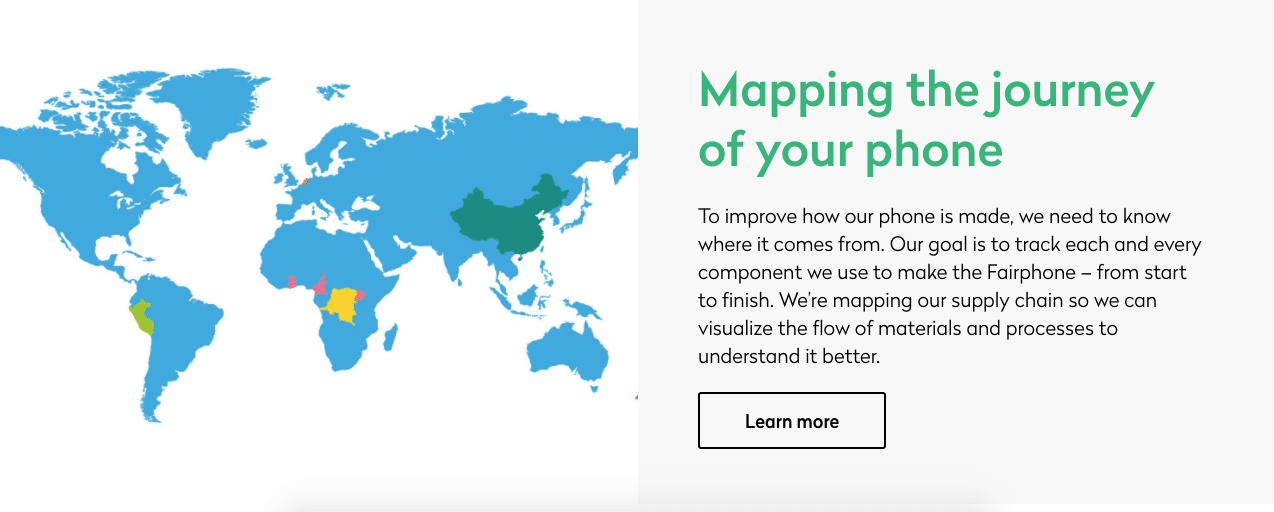
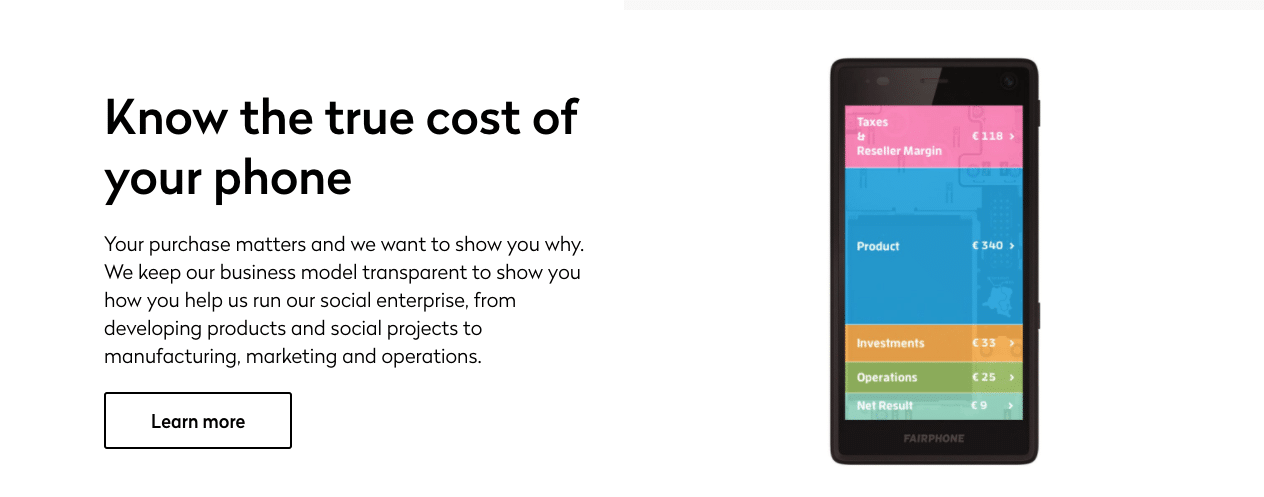
Example 2:
Lonely is a New-Zealand lingerie brand that aims to promote a sense of positive body image and freedom of expression. Their ads show women under a natural and positive light, without photoshopping their bodies.
7. Employees and other stakeholders
Your employees are dedicating around one third of their day to your company’s business. It comes without saying that you have to make sure that they feel valued, respected and safe.
It is important that brands fight for human rights and for their employees’ wellbeing. Some examples of factors to consider are:
- Gender equity (within the teams, at management level, in meetings, etc.)
- No discrimination as to nationality, race, religious beliefs, class or political opinions
- Fair salaries
- Capacity building (professional growth of employees)
- Good working conditions (safety, work life balance, stress management, respect)
- Zero tolerance for corruption, disrespect, harassment or dishonest behaviors
But companies do not only have an impact on consumers or employees. There is a whole range of other stakeholders that are directly affected by the company’s activities. Ethical brands need to listen to them, respect them and respond to their concerns.
Below is a list of a company’s stakeholders and ideas on what needs to be considered for each one of these groups of people:
- Shareholders, investors, business owners: be transparent, respect the financial and organizational commitments
- Government: pay local taxes, follow the regulations and the law (local and international)
- Suppliers: pay them fairly and promptly for their services
- Distributors: provide them with quality products at agreed-upon prices
- Employees: provide good and safe working conditions
- Consumers: provide a product that meets their expectations, at a fair price
- Surrounding communities: ensure they are safe from your company’s activities (reduce potential noise or pollution), respect their cultures and contribute to sustainable community development
- Partners: choose ethical partners, and respect all the agreements you have with them
- Competitors: do not denigrate competitors, try to find mutual synergies to co-exist while contributing positively to society
- Public good: contribute to public good in a responsible, positive, and sustainable way
8. Giving back to communities
Some brands can be praised for positive behaviors such as creating jobs, or offering goods and services people really need. But it is important that brands start being part of the communities they do business in by respecting and supporting them.
This can be done in different ways:
By supporting NGOs:
- Financial contribution
- Pro-bono contribution (employee volunteer programme)
- In-kind contribution (goods and services rather than cash)
By investing in the local culture:
- Sponsoring local cultural events (e.g: art exhibitions, concerts, film festivals, literature events)
- Heritage conservation (e.g: restoring historic buildings, museums or natural parks)
Through a specific business model:
- Buy one give one: for every product purchased, the brand commits to give something to people in need.
- Social business: this is perhaps one of the most advanced types of ethical companies, where all profits are reinvested within the company to achieve a socially beneficial objective. Nobel Peace Prize winner, and founder of the social business concept, Mohammad Yunus defines a social business as a cause-driven business within which “the investors/owners can gradually recoup the money invested, but cannot take any dividend beyond that point. Purpose of the investment is purely to achieve one or more social objectives through the operation of the company, no personal gain is desired by the investors.”
Examples:
Toms Shoes and Elephant Branded are two examples of brands using the “buy one give one” business model. This means that for every product purchase, the company donates a related item to communities in need.
“Through your purchases, TOMS helps provide shoes, sight, water, safe birth and bullying prevention services to people in need.”
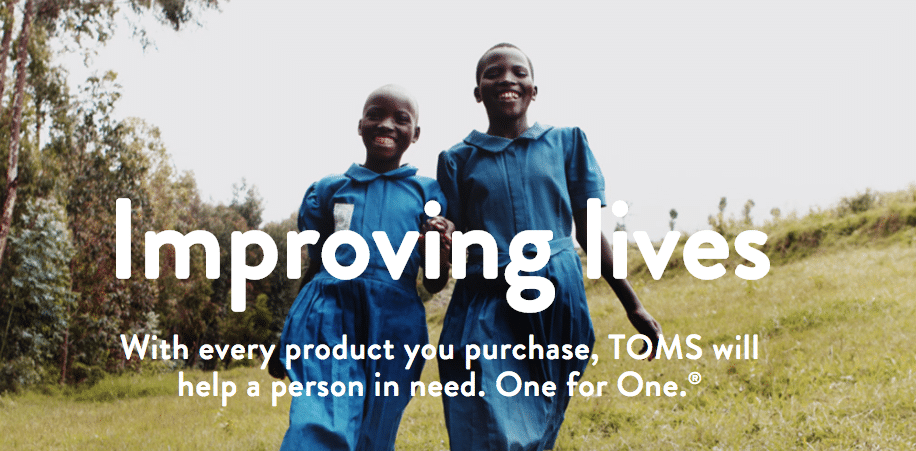
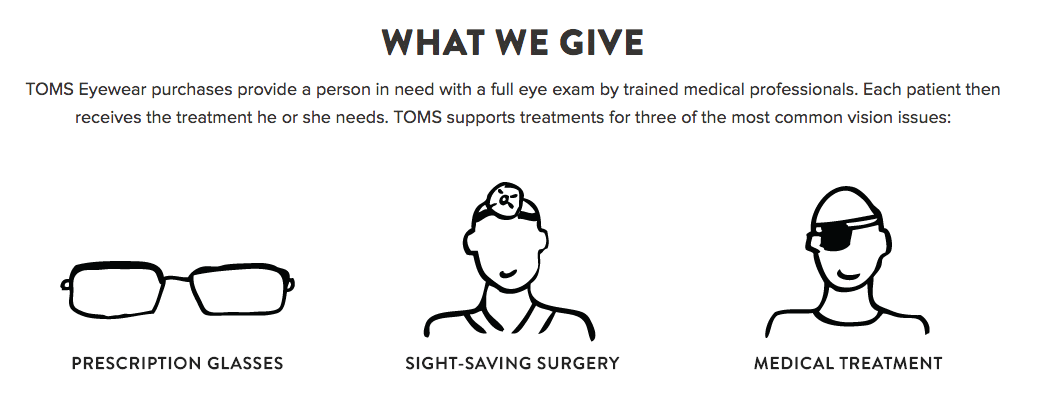
Pocheco is a great example of a social business where the company’s results are systematically reinvested in the company, avoiding the distribution of dividends. The French company calls this the “ecolonomy”. Pocheco pursues a social impact by producing recyclable and biodegradable envelopes and other paper supplies while focusing on:
1) The reduction of workplace hazards and harsh working conditions
2) The reduction of environmental impact and the prevention of pollution
3) Increase in productivity

Conclusion
The concept of ethical branding is broad and the list of factors to consider is quite extensive – at this stage we don’t know a brand that is 100% ethical.
However, businesses and organizations should think about the discussed 8 factors to create an ethical brand and contribute to the world and society in a positive way:
- Ethical brand purpose
- Ethical brand values and principles
- Product and services
- Production
- Supply chain and distribution
- Communication
- Employees and other stakeholders
- Giving back to communities
The purpose of this article isn’t to make business owners and companies feel guilty about their brands – quite the opposite! The aim is to spread some positive examples and further inspire business owners, marketers and entrepreneurs about ways to build products and brands that contribute to the world and society in a positive way.
The ideas and examples listed above clearly show that solutions exist, and that corporate brands can indeed find ways to improve their impact on our planet. It’s very positive to see companies working hard towards building more ethical brands.
We acknowledge that this article is just a first step towards understanding the concept of ethical branding. We might have forgotten other factors to consider, which is why we promise that this article will be further improved over time.
If you have suggestions on how to improve this article, please do not hesitate to share your ideas in the comments below. We would love to hear your opinion about the ideas shared above.
And if you know some additional examples of:
1) factors to consider for building ethical brands
2) examples of companies trying to build ethical brands
3) organizations or citizen movements that can provide more detailed information according to the industry or type of ethical behavior
… please share them in the comments below!
We will try to integrate them into the article within future updates.





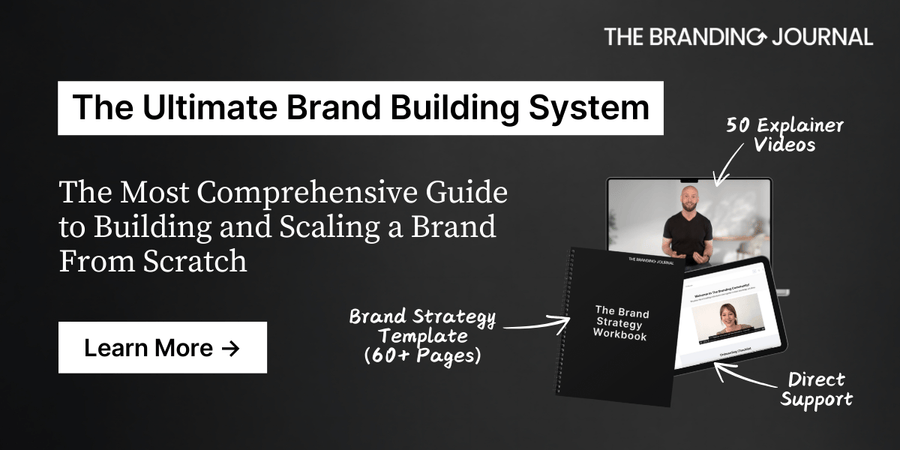
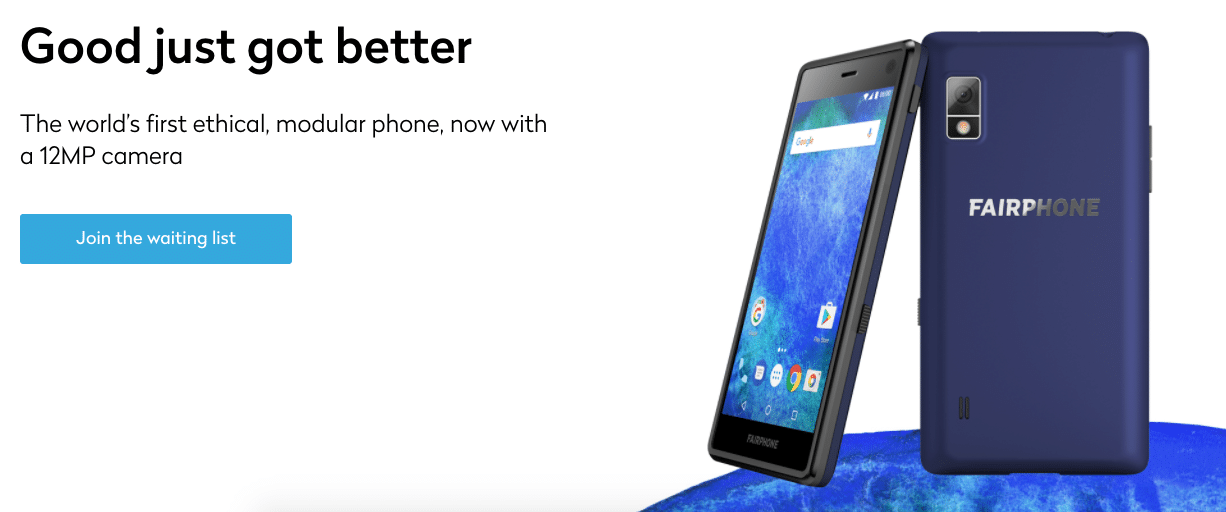

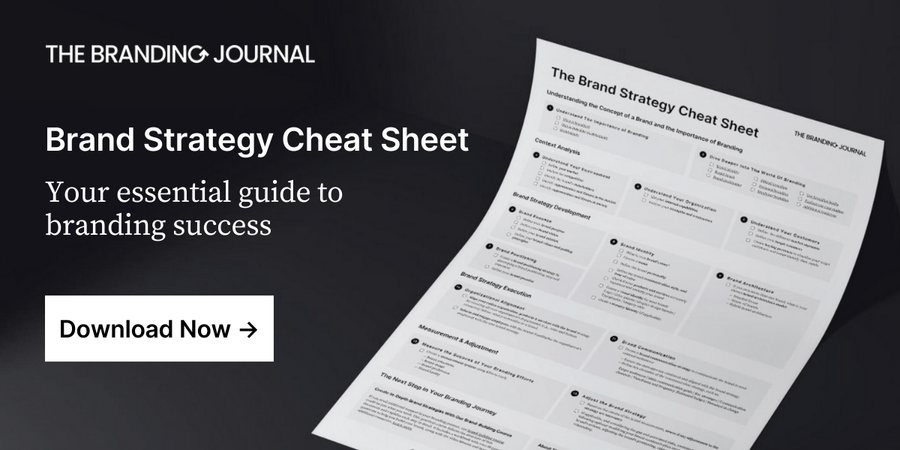


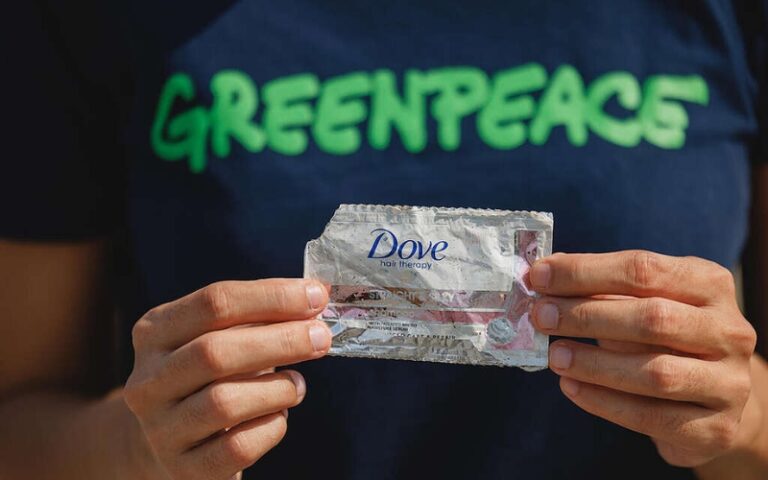

One of the things that originally drew me towards a career in graphic design was the influence and power that design can wield. But, as its been said, with great power comes great responsibility. As designers, marketers, PR professionals, etc. we have a responsibility to communicate honestly and establish good practices within our companies. Although not everyone has influence over all of the aspects you mention above, we can all do our part in our own areas of influence to promote ethical branding and decision-making.
Thanks for the reminder that we all have the ability and responsibility to contribute to society in a positive way!
Thank you for sharing your experience and thoughts Chelsea!
Interesting and Inspiring article, thanks to the writer !
Ricardo
Entrepreneurship Prof.
Happy you enjoyed the content Ricardo! And thank you for the nice comment.
Amazing article, thanks a lot to the writer! I really enjoyed the examples because they help get a concrete idea about what can be done in different business areas. Brands should definitely start creating their business strategies around the ideas listed above.
Great post. A good timing for me to read it when I have just started my blog a couple of days before. Keep sharing the tips
Power Wheelchair
Awesome post.
This is one of the best branding article.
Find it very helpful
Thanks for sharing!!!
The first step is to get started, because if one waits until every aspect of their business is 100 percent ethical, they may lose motivation to begin at all. The SDG goals are particularly relevant in this piece, which is timely. Brands with a social conscience should strive to speak out against a problem that causes people to become homeless and contributes to their poverty. Customers will spend more money at your establishment if you provide or contribute to providing a comfortable environment for them to live.